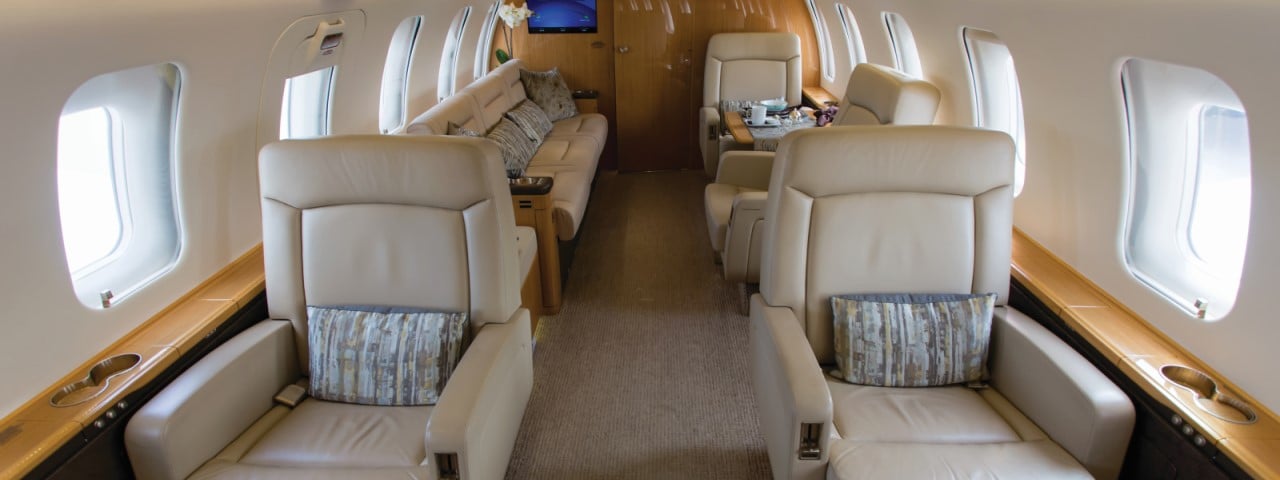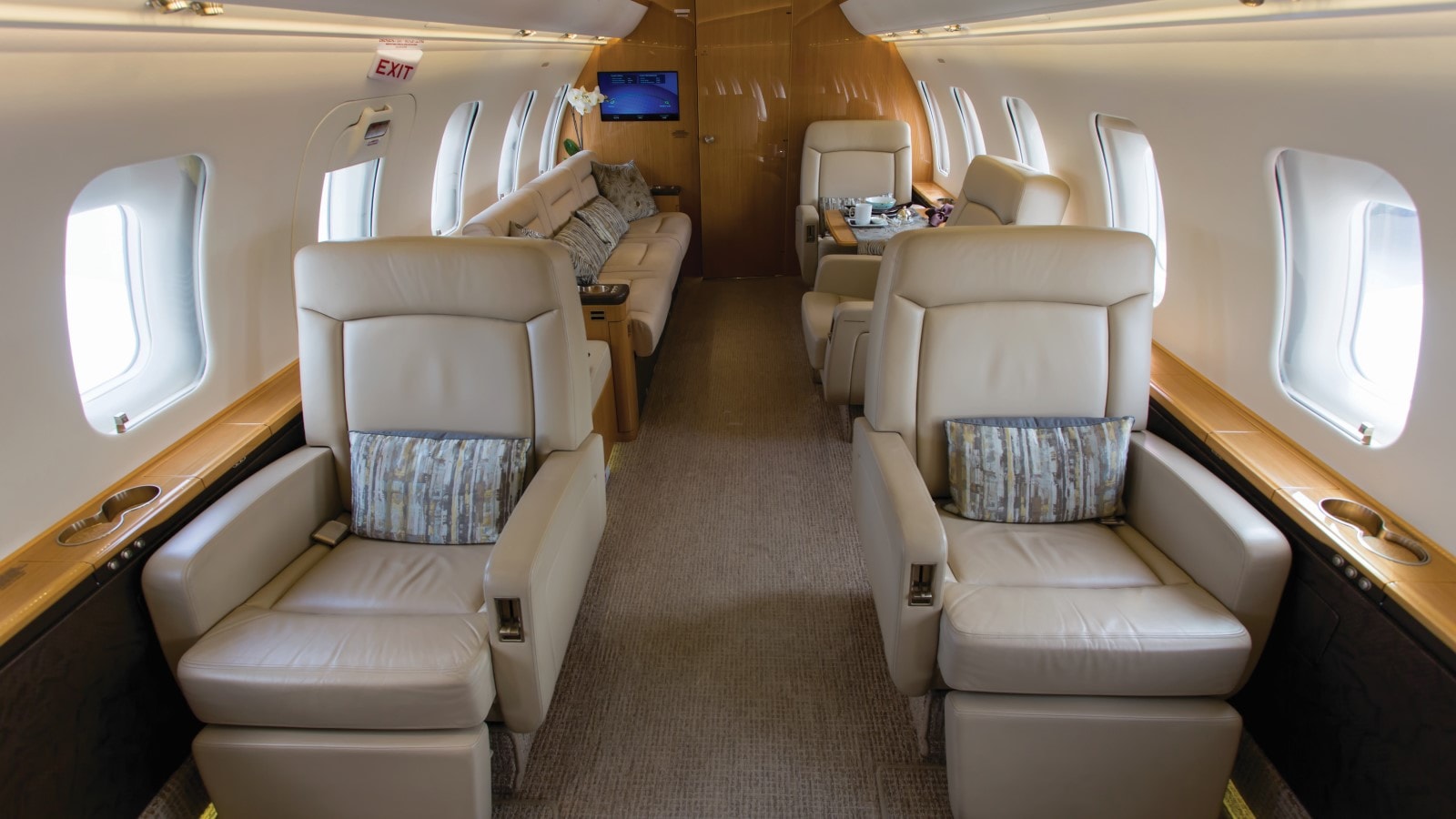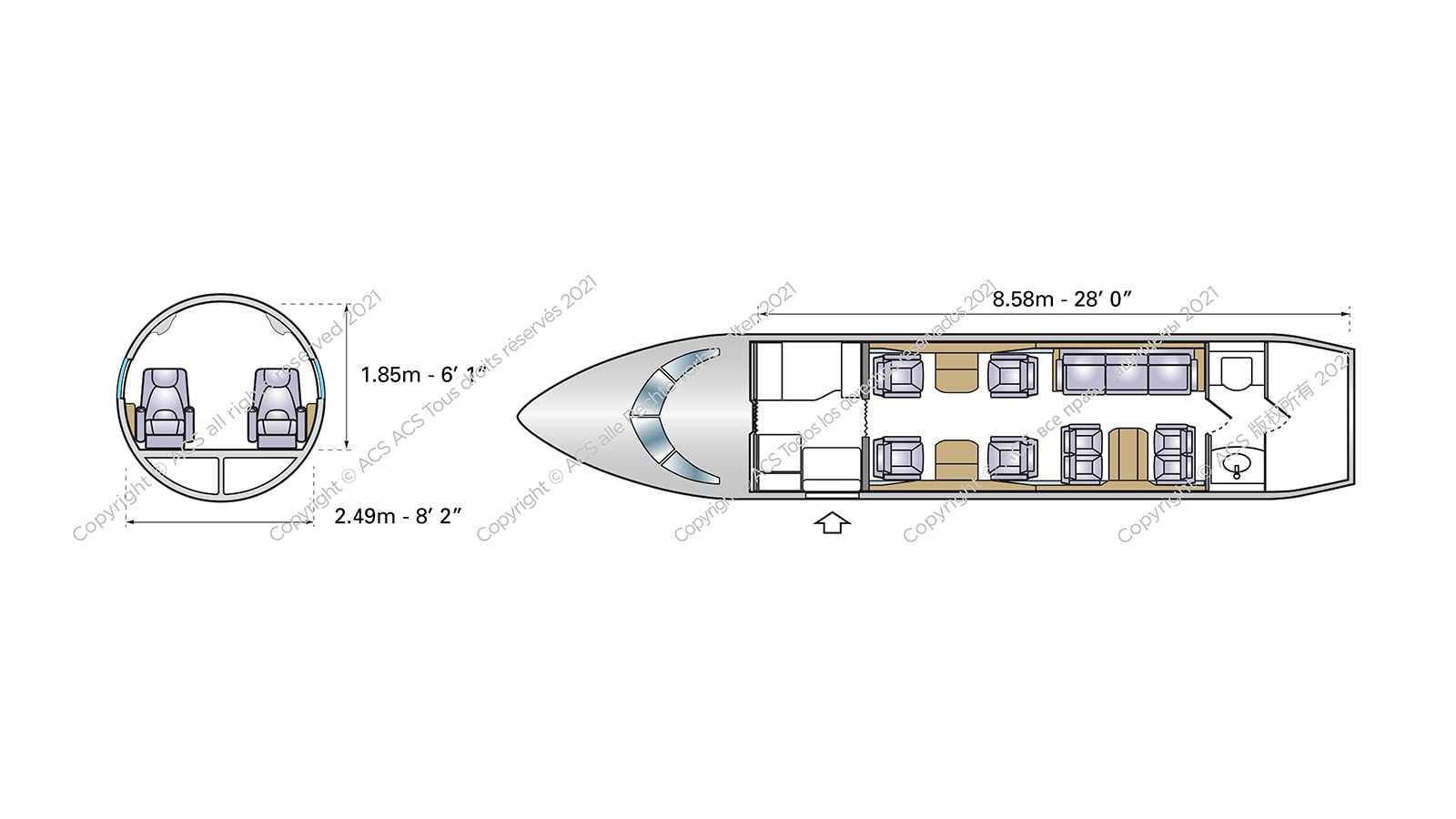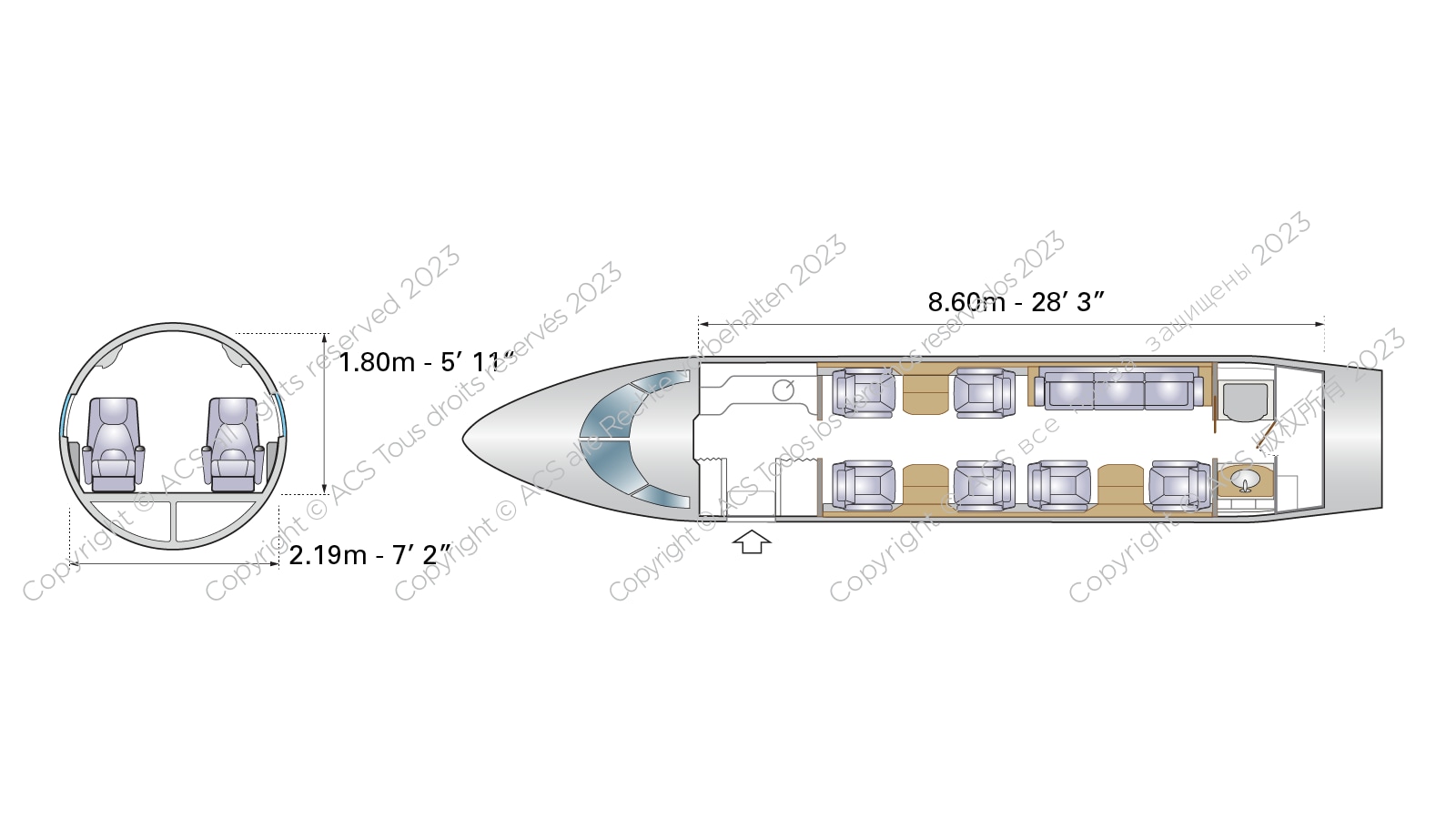BOMBARDIER CHALLENGER 600
- Passengers 11
Breaking new ground as a true wide-bodied business jet, the mid-range Bombardier Challenger 600 (also known as the CL-600) is well-equipped for onboard meetings, dining and relaxation.
About this aircraft
- The Challenger 600 was designed by Learjet founder Bill Lear as the LearStar 600, before Canadair purchased the rights to the project in 1976. The aircraft gained certification in 1980 and Canadair was bought by Bombardier six years later.
- Most CL-600s are configured for a maximum of nine or 11 passengers. The enclosed lavatory can be used as an extra passenger seat if required.
- With 115 ft3 of internal baggage storage, there’s space for 12 suitcases.
- After around 85 deliveries, the CL-600 was succeeded by the 601 in 1983.
The Challenger 600 launched in 1980 as the first private jet with a ‘walk-about cabin’. It’s still a popular charter option today, with a cabin size that rivals newer aircraft in its class.
Interior design

The Challenger 600’s fuselage is designed to deliver a spacious, comfortable cabin, which is just over 6 ft high and has an unobstructed floor.
The standard executive layout divides the cabin between a forward galley and two seating areas. These are typically fitted with a four-chair club and a conference group area with a divan that converts into a bed. There’s also a lavatory at the aft end.
Chairs can swivel and fully recline. Lighting controls, entertainment systems and foldaway tables are attached to the cabin walls, along with two wardrobes for storing hand luggage.
Below are standard configurations found onboard a Bombardier Challenger 600.


Interesting facts to learn before you fly
- The aircraft offers non-stop coast-to-coast range in the United States.
- Its wide cabin gives an impressive sense of space on board.
- Baggage is accessible during a flight.
- Upgrades include the 600S, which features added winglets; and the newer 601, which is easier to source for charter and offers better performance and range.
Technological features
Introduced before electronic flight instrument systems were commonly available, the Challenger 600’s avionics include a dual-channel Sperry SPZ-600 automatic flight control system with flight director and air data computers. More typical of larger commercial aircraft, this system is certifiable for conducting Category 3A automatic landings.
The flight control system has significant redundancy, including three individual hydraulic systems; so even with complete failure and the loss of one actuator, there’s still a viable level of assisted control over the key flight surfaces.
Supplied as standard were a Primus 400 weather radar; Marconi-built solid-state instrument displays; and a Collins Proline 1 radio set, with the option to install long-range radio-based equipment such as an HF transceiver radio and Global Navigation GNS 500 VLF/Omega and Delco Carousel INS navigational aids.
History
The Bombardier Challenger 600 began as a concept based on Bill Lear’s LearStar 600 long-range business jet. Lear lacked the resources to develop such an aircraft and sold the rights to Canadair in 1976.
The project launched later that year and the aircraft was re-named the Challenger 600 when Lear’s involvement ceased. The CL-600’s original design featured a large airframe with a new supercritical wing, T-tail and fresh avionics. Several redesigns affected the cost and schedule, leading to Canadair needing a financial bailout from the Canadian government.
The first prototype made its maiden flight from Montreal in late 1978, followed by the second and third prototypes in 1979. Type certification was approved by Canada and the USA in 1980, with the first CL-600 entering service that same year.
Manufacturer
Bombardier Aviation (formerly Bombardier Aerospace) manufactures business, commercial and specialised aircraft. The company began with the acquisition of several established aviation companies, starting with Canadair in 1986 and followed by Short Brothers in 1989, Learjet in 1990 and Boeing subsidiary De Havilland Aircraft of Canada in 1992.
Headquartered in Montreal, Canada, today Bombardier has over 60,000 employees and is a leading global manufacturer of aircraft and trains with sites in 25 countries.
Cost
The cost of buying a Bombardier Challenger 600 ranges from $700,000 to $900,000 (USD).
Charter rates
Charter rates for the Bombardier Challenger 600 can vary greatly depending on the length of the journey you have planned, as well as the airports you decide to fly in and out of.
Contact our offices to book a private charter flight on the Bombardier Challenger 600. For information on other private jets to charter, browse our list of available private aircraft.
Wet lease rates
ACMI (Aircraft, Crew, Maintenance, Insurance) wet lease rates for the Bombardier Challenger 600 depend on the aircraft’s age, lease term length, number of guaranteed block hours and average cycle ratio.



